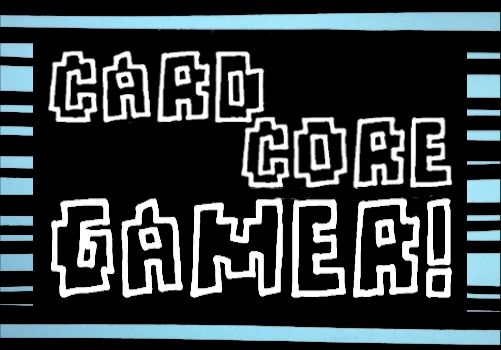Cardcore Gamer: Catcore Gamer
Cats! Darlings of the internet and scourge of rodents (except for the Capybara). So why is there such a dearth of properly cat-themed games?
There have been plenty of cat-related games released over the years, including the recent Kittens in a Blender, Exploding Kittens, and a fair chunk of the design career of Aza Chen, but it’s hard to find games that feature cats in more than a shallow way. Felinia unconvincingly shoehorned cats into a standard Renaissance trading game with no catnip mice to be see, while Hot Tin Roof more successfully applied a cat theme to its light, abstract gameplay, but still none have truly captured the full feline scope of poise, grace, hilarity, disgust, and violence.
Is it even possible to design a truly catty game? In The Unadulterated Cat, Terry Pratchett observed the real-world phenomenon of Cat Chess, a game which may be “…going on at some mystically higher level unobtainable by normal human minds…” and perhaps this is the problem. In order to make cats a thematic fit, designers have thus far applied broad stereotypes – having 9 lives, chasing mice, hating water and so on. I believe that these clichés are used to protect their sanity, for to create a comprehensive cat game one would have to try and comprehend the swirling madness residing in the furry buggers’ minds.
I’m now going to attempt to do exactly that and suggest some ideas for designers to create a ‘proper’ cat game:
- Setup: Place your cat on top of a heat source space, under a bed tile, close-but-not-that-close to another cat in play, or somewhere unknown to the other players, who must then attempt to find your cat while you attempt to sneak it onto the board and claim it was there all along.
- Worker Placement: Your cat may be moved at any time, but probably won’t. Cats must make a mandatory move to the kitchen space when a player flips the fridge door card to its Open side, or even vaguely hints that they might do so. Cats must also move noisily to a random space if the time is 3am and all the players are asleep.
- Dexterity: At any time during the game, players are encouraged to gently and repeatedly tap at a game piece of their choosing whilst wearing an expression of acute concentration, mixed with mild bafflement and alarm. If the game piece falls onto the floor, the player who knocked it down must cease to care.
- Bluffing: When a player declares that they are moving their cat to an outside space, any other player may call their bluff by flipping the exterior door card from its Closed side to its Open side. The moving player then responds by making a number of moves across the door card with their cat. The number of moves must be in a range from zero to infinity.
- Party Game: If during their turn a player suffers an hilarious momentary loss of dignity, then it never actually happened. The player was clearly washing/somewhere else/Being Very Interested In A Thing.
- Social Deduction: If you intend to design a game exploring the mind games of cats, then you are probably insane and should seek help immediately.
I suspect the real explanation as to why no games capture what it is to be a moggy, is that games need rules and cats abide by their own. Your average, unassuming goldfish-terrorist simply has no use for the restrictions of the human world and will do as they damn well please…or maybe Pratchett was right and we simply could not conceive of a game of suitable elegance, subtlety, malevolence, and perhaps genius to do Our Fluffy Overlords justice.



